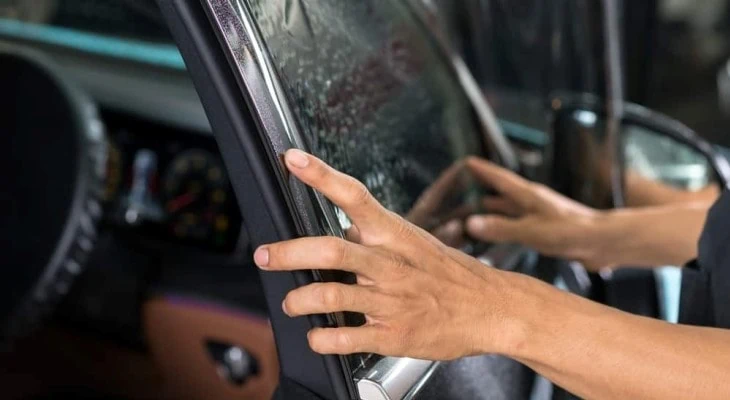If you want to drive through town incognito with darkly tinted windows, you may run into a problem with the vehicle inspector. In the United States, there are local laws and regulations regarding the amount of window tint allowed. Can you get around this? Should you get around this? Let’s find out!
Tinted windows are helpful to block UV light, however, they also reduce visibility. This could be dangerous to the driver and could pose a hazard to law enforcement, or impede emergency personnel. It is best to follow the law and only apply window tint that is approved in your jurisdiction. However, to pass inspection with a darker tint, it may be necessary to remove the windows altogether, then replace them after the inspection.
Table of Contents
How to Legally Pass Window Tint Inspection
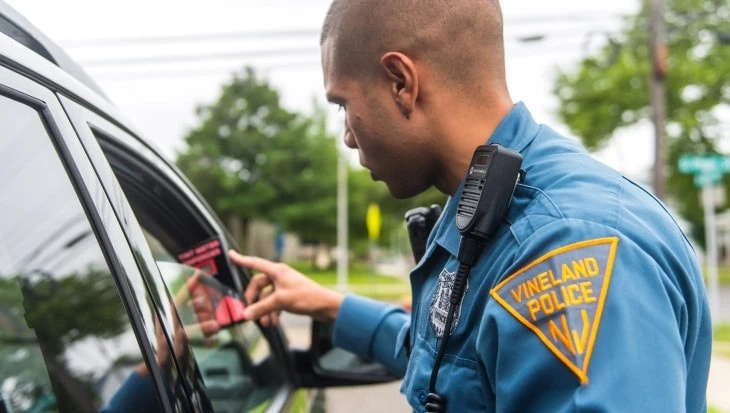
It is always best to remain within the confines of the law. If your vehicle requires a window tint inspection, I would recommend following the law. Different states and counties within the United States will have different tint requirements.
Following the law is the easiest way to pass inspection! What’s more, you will not need to worry about future inspections or legal repercussions.
Check Local Law
Use Google to check your local laws for window tint requirements. It will vary state by state. Often, the window tint is specified by a percentage.
For example, in the state of California, window tinting laws were put in place in 1999. California window tint law restricts windshield tint on the top four inches of the windshield. Front side windows must allow 70% of light to pass through or more. Backside windows and the rear window are allowed to have any tint darkness.
In New Jersey, no tint is allowed on the windshield or front side windows at all. However, the backside windows and rear window can have any tint applied.
Purchase Tint That Falls Within the Requirements
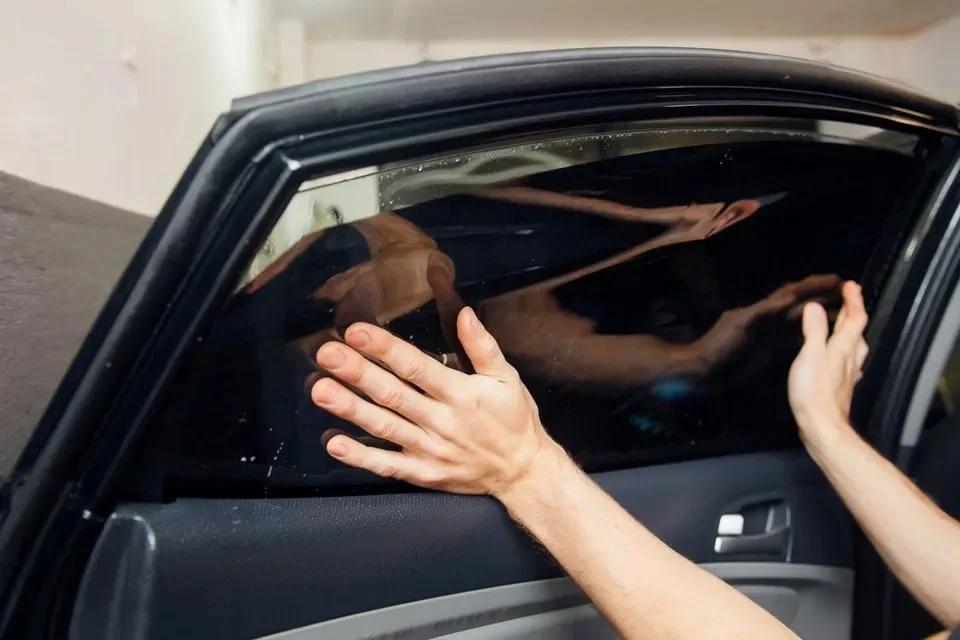
If the tint you have already is original to the vehicle, you should be able to pass the inspection. Before you purchase a new window tint, check the local laws and make sure you purchase a window tint that follows the law.
Test Existing Tint
If the tint you have was installed aftermarket, purchase a tint meter, and find out if your window tint is within the local standard. A tint meter tests the amount of light that the window lets through.
Remove the Tint, If Necessary
If your window tint does not comply with the local, legal window tint standards, it’s best to remove it. Purchase window tint that does follow the law and install that on your windows instead.
How to Get Around a Window Tint Inspection
If you are concerned that your windows will not pass inspection, and you want to keep them at their current tint level, you can remove the car windows before the inspection, and replace them afterwards.
Remove the Windows to Pass Inspection
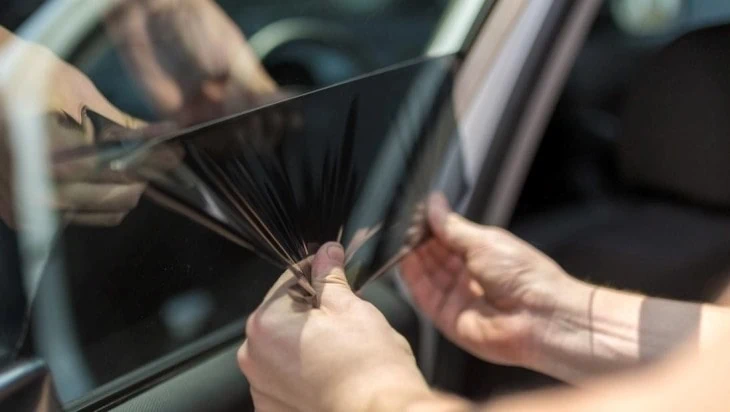
This process involves removing the tinted windows, then replacing them after the inspection. It will take at least one hour to remove the windows, so plan accordingly.
Materials Needed
Step-by-Step Instructions
- Pry off the plastic panels – Use the pry bar or a screwdriver to remove plastic panels surrounding the window.
- Remove panel screws – There are screws underneath the plastic panels. Remove these. Check all the way around the panel to make sure you don’t miss any screws.
- Remove the window switch – Unscrew and disconnect the window switch. If you have a crank window, just remove the crank.
- Remove the door handle – This step may not be necessary, depending on the make and model of your car. If you remove the handle, detach the link to the handle mechanism.
- Remove the door panel – Everything should be out of the way so you can pull the door panel away. It should simply lift off. If it is stuck, check to see if everything is detached.
- Peel back the insulation – There is a piece of insulation called the air barrier. It keeps the outside air from getting into the car. Peel the air barrier out of the way so that you can access the inside of the car door.
- Remove the window nuts – You will need to lower the window to do this. Either reattach the handle or plug the power window connector back in so that you can access the window nuts.
- Remove weather stripping – Peel away the weather stripping. You may need to purchase new weather stripping when you replace the windows.
- Remove the glass – Tape the edges of the window in order to protect them from chips and cracks. Carefully wiggle it free of the door. You may need to locate the tension fasteners and loosen them in order to get the window clear of the door.
- Reverse the process – After your window inspection, you will need to reverse these steps in order to replace the windows in the car.
A Word of Warning
I always recommend following local laws and statutes. It’s best to keep your window tint within the guidelines put in place by your government. The laws are put in place for the driver’s safety.
Law enforcement wants to make sure that the driver can see well out the windows. It is also helpful for law enforcement and emergency personnel to be able to see into the vehicle in case of an emergency.
Benefits of Tinted Windows
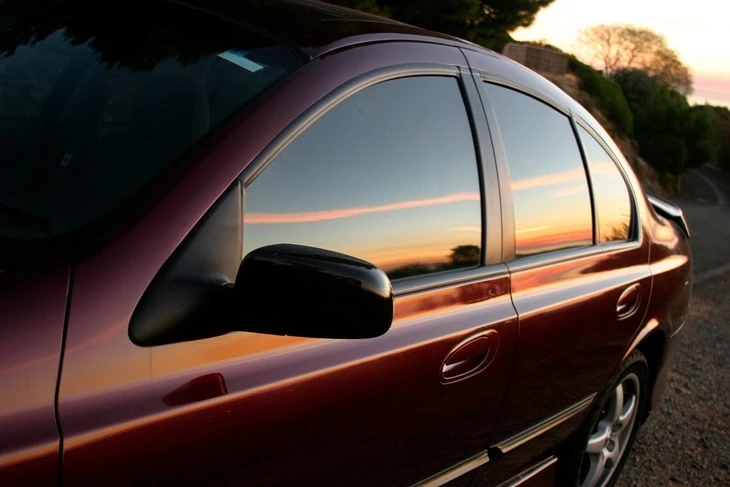
Window tint is helpful to protect the car’s occupants from harmful UV rays that come through the windows. By blocking these rays, the car’s temperature will also be cooler. It also helps reduce the glare from the sun.
Tinted windows are also less likely to shatter. The tint is a film that helps hold the glass together during an accident.
Many drivers just like the look of darkened windows. It is a unique and striking look that makes the car stand out from the rest.
Final Thoughts
Though dark windows may look cool, and block the sun, it is better to abide by the laws put in place by your local government. Window tinting regulations are usually due to safety concerns. Check your local laws, and tint your windows accordingly!

